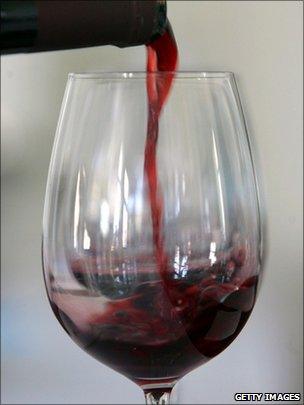New method to tackle binge drinking in young people
- Published

Many students do not know what a '"unit" of alcohol looks like.
Researchers at Aston University have come up with a new way to help young people control their drinking.
They found over 500 students from universities in the UK had no idea what a "unit" of alcohol looks like or what safe levels of alcohol intake are.
The Aston team established that giving the students feedback on how their drinking compares with peers reduced their consumption.
The study was presented this week at the British Science Festival.
Dr Richard Cooke, one of the researchers, asked students at three UK universities to define "binge-drinking" in terms of government approved "units" of alcohol.
He found they didn't understand how much a unit is or how many would constitute "binge drinking".
"I'm not sure that people keep track in terms of units; I think they keep track in terms of how many drinks they've had," he told BBC News.
Dr Cooke and researcher Alice King found that techniques used on people with serious drinking problems in A&E departments could be adapted to help reduce student drinking.
Interventions for problem drinkers involve feedback from doctors and nurses to help them see what their problem is and how they might solve it.
Dr Cooke said for students who don't realise their drinking levels are high the key is to get them to compare themselves to other people their own age.
The researchers told the students how much they drank in comparison to figures for other students.
In their study almost all students thought they were less likely to be a binge drinker than the average student.
The researchers found giving students feedback on how their drinking compared with their peers was helpful in reducing their drinking.
Dr Cooke believes this kind of feedback might work well face-to-face in a GP surgery for patients who aren't currently seen as problem drinkers.
- Published2 September 2010